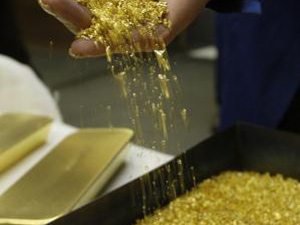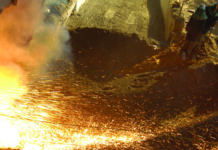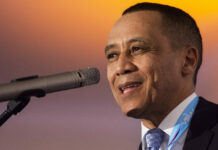
[miningmx.com] – TRADE in gold slipped below $1,135 per ounce in Hong Kong today, a price that is dangerously close to the operating break-even of most South African gold producers and near the level of their reserve calculations.
According to Mark Bristow, CEO of Randgold Resources, the global gold mining sector has to make some tough decisions in order to stay alive – or risk structurally damaging it.
“It’s not irretrievable, but you have to take production out, shorten the life of mines, and do some of the tough stuff,” he said in an interview.
For Bristow, the answer to the weakening gold price is to deal with the expensive production because demand is still relatively strong. “I think about 50% of the industry is bust on cash flow basis,” he said.
Yet comments from other gold producers suggest the sector is still hoping the market will come to its rescue anyway even though the sector is, as a whole, positioned in the fourth quartile of the global all-in cash cost curve, according to research by Standard Bank Group Securities.
Srinivasan Venkatakrishnan, CEO of AngloGold Ashanti, offered some comments on the gold price during the group’s third quarter figures saying the market was driven by psychology and that data suggesting the US market was in a full-throated recovery could easily change direction.
“The US recovery cannot be predicated in isolation and there’s still alot of data based on sentiment and psychology rather than hard fundamentals,” he said.
“Comex shorts are at record highs; there is alot of pessimism. A lot of herd activity,” he said. The suggestion was that the ill winds could easily switch direction to the benefit of gold producers.
Graham Briggs, CEO of Harmony Gold, said his company “continued to assess” its operational performance at current gold price levels. “Corporate and service costs have been reduced and we continue to look at ways of further reducing it,” he said.
But he also held out hope the market would come to the company’s rescue: “We are gold bulls and believe that the company must continue to be competitive in times of low gold prices to ensure that when the gold price strengthens, we will reap the benefits for all our stakeholders”.
He also believed that the countervailing effect of a weaker rand on dollar-denominated revenues – the rand gold price – would also assist the company and help it survive the downturn. It’s questionable, however, whether a weak rand can be relied upon instead of just cutting production.
“At the current Rand gold price most of Harmony’s underground mines are loss-making given the company’s average all-in sustaining cost of R431,000/kg,” said Sibonginkosi Nyanga, an analyst for Imara SP Reid.
“Harmony’s market cap has halved in the last 3 months to just around R7.96bn, it is a 1.2 million ounce producer but at very low margin,” he said.
For Bristow, cost-cutting is necessary because there was still “a lot of fat in the corporates’, but the deep vein surgery was still to be performed.
“You have to change the grade as they did when the gold price went up,’ he said of the need for gold producers to mine more selectively. “What we are doing now is structurally damaging the industry.
“It has got more debt, the same production, and less quality than at the start [of the gold bull run]. We have gone into a downward cycle and the industry is poorly prepared for what it has to do – and with a lot of debt.’
Standard Banks says different solutions are required for different companies in the sector, but the most vulnerable are Harmony and AngloGold Ashanti with some seven operations identified as weak and in need of restructuring.
At a gold price of below $1,200/oz, roughly 80% of Gold Fields and AngloGold Ashanti’s production is safe while some 74% of Sibanye Gold’s output survives at that gold price.
The figure falls to a perilous 43% for Harmony Gold which, with Kusasalethu on two weeks downtime due to illegal mining troubles, will face considerable pressure to restructure.











